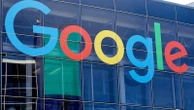As an entrepreneur (and frequent customer), I’ve long admired Starbucks for the vision and innovation that turned a single Seattle storefront into an $100 billion juggernaut with 39,000 locations.
Recently, however, their magic touch appears to be fading. Sales have skidded, competition is growing, and the CEO was recently sent packing after a little more than a year in the job.
As the CEO of a healthcare company, I’ve been following along . . . and taking notes.
Coffee and healthcare might seem worlds apart, but on closer inspection the parallels are hard to ignore. Inflation and unsustainable costs, fragmented digital and in-person experiences, alienated consumers and employees, long wait times—as it turns out, Starbucks and the U.S. healthcare system are facing many of the same headwinds.
The cause of Starbucks’s recent stumbles—or the failure to anticipate them—is a cautionary tale for innovators seeking to reinvent the healthcare experience the way Starbucks revolutionized the coffee industry. Here are three key lessons that stand out.
1. Focus on experiences, not transactions
The key to Starbucks’s explosive growth in the 1980s and ’90s was the insight that coffee was just a “conduit” for an experience (as former longtime CEO Howard Schultz recently put it). Borrowing a term from sociologist Ray Oldenburg, Starbucks famously positioned its cafés as a “third place” between home and work that fostered a sense of community, belonging, and human connection.
Today, that place is barely recognizable. At many Starbucks stores, plush benches and armchairs that once invited lingering and gathering have been replaced by intentionally uncomfortable furniture. Some locations have scrapped seating altogether to prioritize mobile-app and drive-through orders—which now make up more than 70% of the chain’s sales.
Sound familiar? An overemphasis on speed, convenience, and volume has likewise eroded the healthcare experience. Hospitals and health systems—spurred by pandemic-related financial pressures, industry consolidation, and private equity takeovers—are increasingly focused on revenue and profit, even if it means cutting back on the time doctors spend with patients. (The average primary care appointment is just 18 minutes—only slightly longer than you’ll wait for a latte during rush hour.)
Meanwhile, telehealth providers offering quick-and-easy virtual visits—a business, like mobile ordering, that boomed during the pandemic—have failed to create lasting value for patients or doctors. This phone-a-doc model (which I call Telehealth 1.0) has become just as rushed and depersonalized as the brick-and-mortar healthcare experience.
Healthcare has lost sight of what really matters: long-term relationships between doctors and patients, time and space for human connection, seamless digital and in-person experiences.
“Coffee is personal,” Schultz likes to say; healthcare should be even more so.
2. More options ≠ personalization
The printed labels stuck to every Starbucks order have become an often-cited symbol of the company’s disappearing personal touch. Messages from baristas scrawled in black Sharpie used to be a vehicle for jokes, well wishes, pep talks, even marriage proposals. But the rise of mobile ordering, coupled with an expanding menu, has made those personal messages—and the customer relationships they represented—unsustainable and obsolete.
Starbucks now has more than a dozen food and beverage categories, and their products can be customized in over 170,000 ways (and usually are). While a good thing for consumers, in theory, this unfettered customization has had unintended consequences: more complicated orders, more complex workflows, and longer wait times for everybody. Counterintuitively, more customization has made the Starbucks experience less reliable and less personalized.
Healthcare has its own version of this menu and customization creep. The U.S. healthcare system, once grounded in primary care and the family doctor model, is now dominated by specialists, subspecialists, and sub-subspecialists. At the same time, consumer-friendly innovations—including urgent care clinics, retail primary care providers, and digital apps and niche point solutions for every need under the sun—have, like Telehealth 1.0, largely failed to deliver on their promise.
In fact, the growing menu of specialty care and consumer solutions—often disconnected from each other, and from other healthcare settings and experiences—has added complexity to the system, contributing to inefficiency, fragmentation, and rising costs. Patients, providers, and purchasers of healthcare are disengaged and overwhelmed.
The U.S. healthcare system doesn’t need more point solutions—the healthcare equivalent of a caramel ribbon crunch Frappuccino. We need to get back to basics, combining technology with human expertise and a personal touch to renew our focus on clinical quality, patient-centered outcomes, and patient-provider relationships.
People, not endless options, are the key ingredient in truly personalized experiences.
3. Take care of people first
Another consequence of mobile ordering and customization? An unhappy workforce. Burned-out baristas have become fodder for memes and headlines (“Starbucks Baristas Are Sick of Your Ridiculous Custom Orders”), but the impact on Starbucks is no joke. Employee turnover is rising, along with recruitment and training costs, and stressful working conditions have been a major factor in an ongoing unionization campaign.
Burnout is even more dire in healthcare. Growing admin burden and chronic understaffing during the pandemic—on top of the corporatization of healthcare and the pressure to maximize volume and revenue—have demoralized physicians and nurses and led them to abandon the profession in record numbers, exacerbating the long-standing provider shortage in the U.S.
To take care of patients, healthcare also has to take care of doctors and nurses. That means leveraging new technology like AI to relieve admin burden, streamlining (rather than complicating) workflows, and generally making providers’ lives easier. Most importantly, it means outcomes-based business and payment models that incentivize providers to build meaningful relationships with patients.
Schultz, who spent years working as a barista during the company’s early days, has encouraged Starbucks’s leaders to “spend more time with those who wear the green apron” and focus on rebuilding culture and morale. Healthcare leaders would be smart to heed the same advice.
Create a “third place” in healthcare
Healthcare badly needs a third place of our own. Not a literal place like a coffee shop, but more of a third way, uncoupled from any one physical (or virtual) setting, that provides a fully connected and personalized healthcare experience centered on relationships and human connection.
On this front, healthcare is two or three decades behind Starbucks—not to mention banking, and entertainment, and so many other industries. We have a lot of work ahead of us, and the stakes are higher in healthcare.
On the plus side, playing catch-up means there are plenty of examples and lessons out there that will help us avoid the same mistakes. The next time you’re in a Starbucks, take a closer look around.
Owen Tripp is the cofounder and CEO of Included Health.





No comments